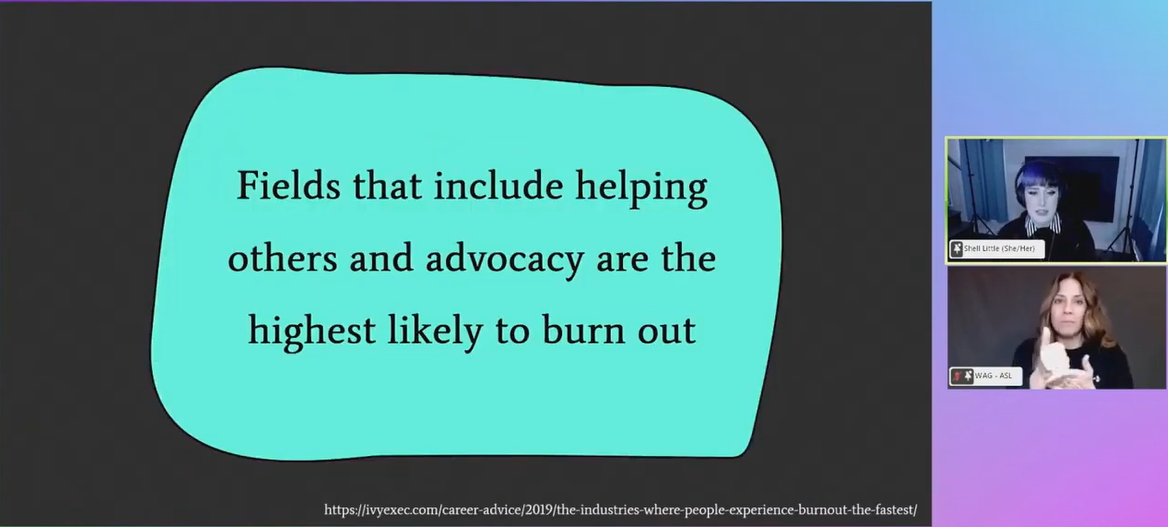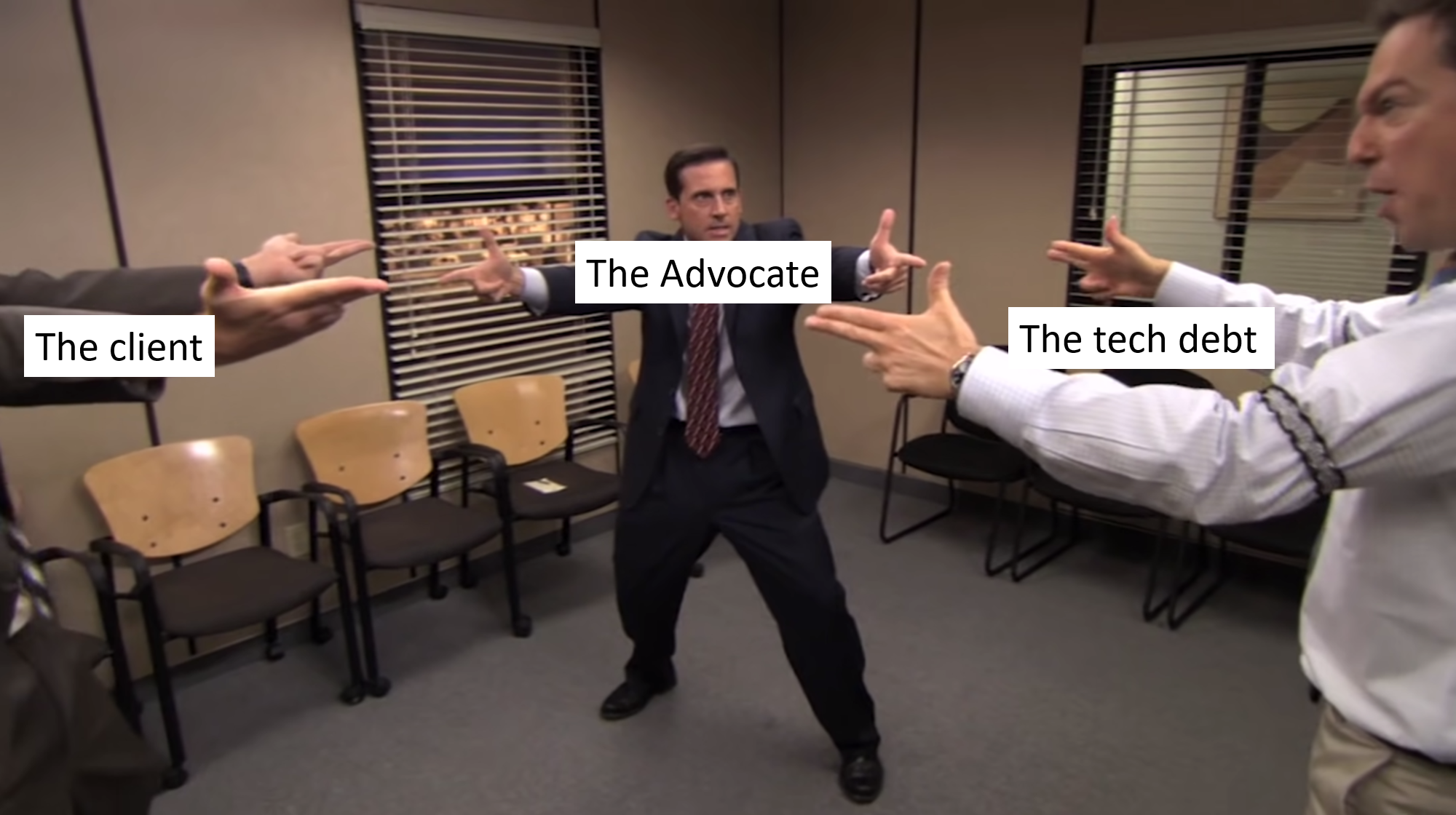Our digital world is expanding, so is the need for accessibility specialists. That being said, behind the scenes, these professionals face challenging obstacles that often go unspoken. In this post, we'll uncover the unpleasant truths of working as an accessibility specialist, from battling technology limitations to fighting for a seat at the table. Get ready to learn about the harsh realities of this vital but challenging field.
I recently tuned in to Shell Little's talk, The Accessibility to Burnout Pipeline, and it has been weighing heavily on my mind since. As someone who works in this field, I realised how tough it can be and how we often don't fully comprehend the difficulties we might face when we start our journey. Therefore, I wanted to take some time to share some unpleasant truths that I've personally experienced during my time in this amazing yet challenging field.
The unpleasant truths:
1. The phenomenon of burnout is genuine
Burnout is a very real and scary phenomenon that occurs when individuals consistently work to improve accessibility for people with disabilities, leading to a state of mental, emotional, and physical exhaustion.
It's not uncommon for accessibility burnout to be triggered by an overwhelming workload, insufficient resources, or a lack of support from others. The impacts can be severe and far-reaching, including negative effects on the mental and physical well-being of those involved resulting in slowed progress towards creating a more inclusive and accessible environment.

As Shell Little aptly put it, accessibility burnout can be "soul-crushing," and the response from the community has been overwhelming. Many of us find it challenging to take breaks, constantly think about our work in our free time, and set unrealistic expectations for ourselves.
“The work we do is important but so is your own well-being… We can't all be martyrs. We all need to take care of ourselves. Because we need to be able to sustain doing this work for a long time and …[if]... we are all sprinting, we are all going to burn out.”
Shell Little, The Accessibility To Burnout Pipeline, Axe-con 2023.
We have to start shedding light on this topic, so we can start to have more open conversations about accessibility burnout and take meaningful steps to prevent it from occurring. It's essential that we prioritize our own well-being while continuing to do the critical work of making the world a more accessible and inclusive place.
2. Accessibility is a Complex Product That Takes Time to Understand
Accessibility is a topic that requires serious time commitments.
It's not just about making sure that digital products are accessible to everyone. It involves considering a wide range of factors such as; user experience, user interface design, web development, and assistive technology.
But it doesn't end there. Accessibility guidelines and techniques are constantly evolving, which means accessibility specialists must stay updated on the latest best practices. This is because to create truly inclusive and accessible digital products, accessibility must be integrated throughout the entire development process. From design to development to testing, collaboration between different teams is crucial to ensure that individual needs are met.
Becoming an accessibility specialist, consultant, or expert is no easy feat. It can take months or even years to build up the necessary knowledge and experience to be considered a full-time resource for accessibility. In fact, it took me four years of being nearly a dedicated resource for QA for accessibility for my title to change to "Accessibility Test Analyst." - and this is just one principle that an accessibility specialist might have.
Accessibility is a complex and ongoing process that requires dedication, collaboration, and a deep understanding of individual needs. But the rewards of making digital products accessible to everyone are immeasurable.
3. Get Ready to Rumble
As someone who works in the field of accessibility, I can tell you that conflicts are unfortunately common. Even when you're learning, you'll find yourself in near-constant disagreement. It's just part of the territory.
One of the biggest sources of conflict arises when accessibility specialists push for the inclusion of accessibility considerations in the project process, but encounter resistance from other stakeholders. This can happen for a variety of reasons - maybe people aren't aware of accessibility requirements, or they don't have the resources or budget for it, or they simply prioritize other goals over accessibility.
Whatever the reason, it can be frustrating and demotivating. Nevertheless, we are advocates for accessibility so we need to “fight for our place at the table” (a rallying call for advocates to push for accessibility in their workplace). We need to be prepared to stand up for what we believe in, even if it means facing conflict and pushback.

However, there are also conflicts that you might not expect. For example, even when we advocate for inclusion, it doesn't always mean it will be welcomed by others. Accessibility can be a nuanced and subjective field, and there are always people who are quick to call out others for getting it wrong. It can be discouraging to see negative corrections on your work or feedback, especially when you're still learning.
Of course, there are cases where things like correct terminology is absolutely essential. But it's also important to remember that getting people talking about accessibility is often more important than correcting every little mistake. We should aim to encourage and support anyone on their accessibility journey, rather than tearing them down for their missteps.
In short, conflicts are a natural part of the accessibility landscape. But by standing up for our beliefs and supporting one another, we can continue to make progress towards a more accessible world.
4. Reducing Burnout: Learning to Compromise and Take the "L"
I take great pride and feel privileged to be a part of Nexer Digital. Our strong emphasis on accessibility is truly admirable, and our collaboration with exceptional clients significantly contributes to mitigating burnout. However, fostering an empowering and supportive workplace, while essential, may not always be enough. Occasionally, we need to reshape our own mental outlook on accessibility. Drawing from my own experience of burnout, I can confidently say that embracing compromise and learning to take the "L" is one of the keys to preventing it.
It's not always easy, especially when it comes to important services like medical, health, and social services. But like many industries, there are individuals, teams and organisations who have a negative attitude towards accessibility, which can be frustrating to deal with. However, it's important to remember that we can't just turn our back on these services and refuse to work with them.
I've encountered individuals in those industries who refer to accessibility complaints as "ambulance chaser," and while their attitude is terrible, we can't let it stop us from doing our job. As Ross Mullen from Can Axess wrote, we need to be mindful of becoming too demanding in our pursuit of absolute accessibility perfection. When we combine this attitude with negative teams, we often hit roadblocks and standstills.

While some teams may be using alternative attributes in the wrong way or only considering accessibility to avoid being sued, it's still a step in the right direction. It's important to focus on the clients and projects that will make a real impact based on our recommendations and that we enjoy working on. Too often, accessibility gets cut at the last minute, and we never get to witness the fruits of our labor.
Save compliance-only concerns for the projects that only care about being compliant, and focus on the ones that care about making a difference.